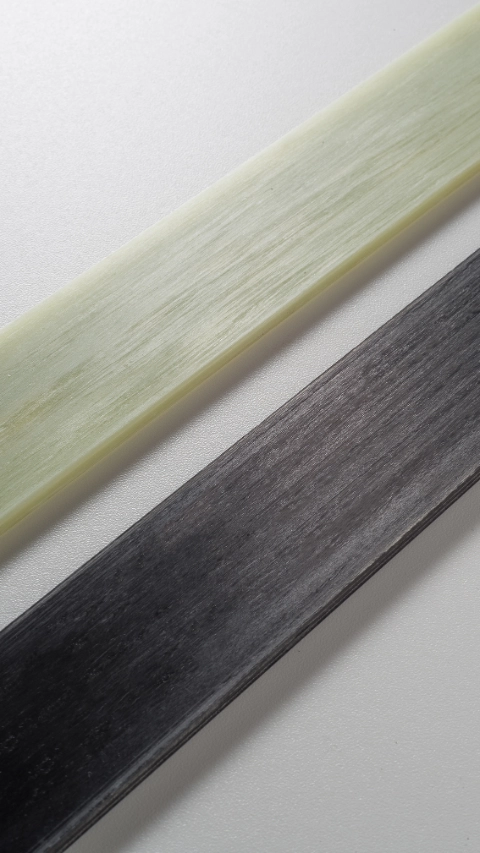Performance Polymers
Pultrusion
What is pultrusion?
Pultrusion is a manufacturing technology using continuous fibers (multiple formats and fiber types are possible) which are “pulled” through a bath of reacting chemistry (the matrix) which binds to the fiber creating a composite utilizing the strengths of the fiber plus the matrix, and shaped by the end die.
What is the benefit of using pultrusion technology?
The driver for considering pultrusion is the mechanical properties of the fiber and the matrix type which will bind the fiber to capitalize its properties. In particular, glass fiber has the modulus (stiffness) and density of aluminum and is stronger than ultra high strength steel. It requires a very good matrix to "wet out" (encase and bind to) and stabilize the fiber such as BASF's Elastocoat polyurethane. Utilizing 70% glass fiber and 30% Elastocoat polyurethane yields a composite which offers a better strength to weight ratio than metal solutions and typically better material costs (excluding manufacturing costs which is dependent on the supplier's capabilities.)
Why work with BASF? Here are four important reasons:
- Materials - BASF is a leader in the field of polyurethanes. We have developed multiple materials specifically for use with pultrusion to increase performance and output.
- Modeling - One of the biggest challenges is the ability to predict the behavior of composite materials. They have anisotropic properties and will behave differently after the initial point of failure where the fiber and matrix begin independently. BASF has spent three years and 1000s of hours of testing and correlating to develop a methodology to overcome this hurdle with successful results.
- Manufacturing - BASF offers expertise in designing parts and tools as well as process optimization.
- Competence - BASF has an increasing list of serial production pultruded components, as well as new products and manufacturing methods in development to increase the value pultrusion can bring to the end user.
Pultrusion can be an option for many applications across a variety of industries, not just automotive. So if you have a project you want to talk through or if you want to schedule a visit to our Composites Lab, please reach out via the form below.
Consult with an expert
Self-service solutions:
